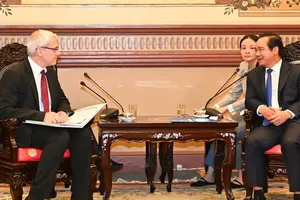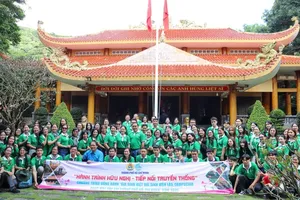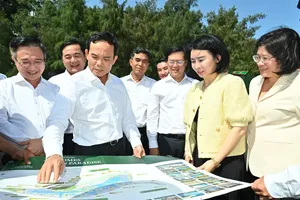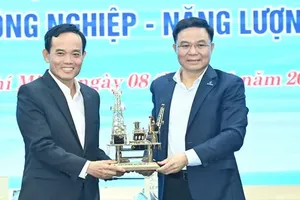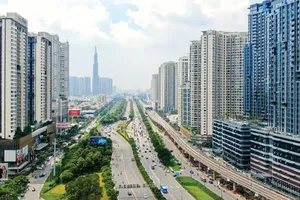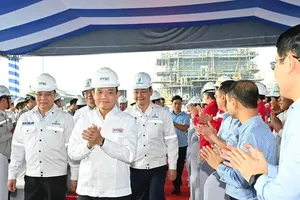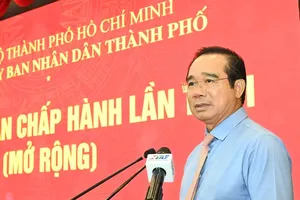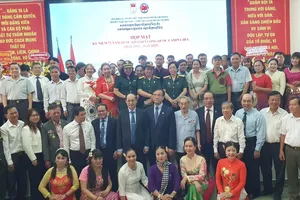
The draft Action Program of the Executive Committee of the Party Central Committee, which is set to implement the 14th Party Congress Resolution, has reportedly laid out a powerful, innovative vision: GDP growth exceeding 10 percent annually, GDP per capita hitting US$8,500, a digital economy accounting for 30 percent of GDP, and total factor productivity (TFP) climbing above 55 percent.
These aren’t just numbers; they affirm a rock-solid determination to pivot to a new development model, one based on productivity, innovation, and results-based governance.
HCMC, being the nation’s undisputed economic heart, contributing over 22 percent of GDP, 27 percent of national budget revenue, and about 16 percent of total export turnover, is now widely expected to become the locomotive for executing these new institutions, rising as an international financial center, and serving as the platform for spreading national productivity.
First, the draft has rightly placed the three strategic breakthroughs, namely institutions, human resources, and infrastructure, at the very center of the development plan. The proposal to finalize the legal frameworks for the digital economy, digital assets, AI, and critically, the “special policies for an international financial center in HCMC,” is a step with real long-term vision.
Second, the shift toward “results-based governance”, complete with quantitative targets, designated responsible agencies, and crystal-clear evaluation criteria, is a fundamental departure from the old way, perfectly aligning with the spirit of building an enabling, high-integrity state.
Third, the macroeconomic foundation is solidifying. In 2025, GDP growth reportedly hit 7.84 percent after nine months, with inflation at 3.27 percent, a trade surplus of $16.8 billion, and $15.4 billion in disbursed FDI. This creates good headroom to accelerate into the 2026-2030 period. However, looking ahead, that double-digit growth target is still facing three critical lags of an institutional lag, a public investment lag, and a productivity lag.
When it comes to executing the draft, HCMC is uniquely positioned. It has a dynamic economy (GRDP for the first nine months of 2025 grew 7.07 percent, with services accounting for over 65 percent) and its infrastructure is moving fast. Metro Line 1 is now operational, while Ring Road 3, the HCMC-Moc Bai Expressway, and the International Financial Center project are all underway.
The city is also a hotbed for innovation, accounting for 35 percent of the country’s tech enterprises and serving as the cradle for numerous Fintech, AI, and green logistics startups. It’s in this context that HCMC can truly lead the way.
However, a few points reportedly still need adjustment:
- Perfecting special financial mechanisms: HCMC needs to be empowered with real autonomy to pilot new collection and expenditure models, issue its own infrastructure bonds, and leverage land funds to generate capital for key projects like urban rail, data centers, and renewable energy. The draft should also incorporate a decentralized budget by output mechanism, rather than the old, rigid administrative input model.
- Building the HCMC International Financial Center: This is the necessary “institutional breakthrough.” The draft needs to clearly define three phases: (1) 2026-2027: Finalize the legal framework and a financial/Fintech “sandbox”; (2) 2028-2030: Get the payment, clearing, and risk management centers operational to international standards; (3) Post-2030: Deep integration with the regional financial network. This center, it’s argued, will be the gateway for attracting long-term capital for national infrastructure.
- Accelerating a one-stop digital government: HCMC should be tasked with piloting this model, integrating business data, RIAs (Regulatory Impact Assessments), and a real-time system to measure processing times. The city can pioneer the public disclosure of its SLA (Service Level Agreement) index, with a goal of cutting procedural time for investment and import/export by at least 30 percent within three years.
- Developing human resources: The draft should carve out a dedicated program for the “Eastern Innovation City” (Thu Duc Ward) in order to turn it into a true hub for R&D, tech incubation, and university-enterprise linkage. A “scholarship fund” and a “talent visa” mechanism are also needed to attract global experts.
- The green economy: HCMC is in a perfect position to lead the charge here, implementing a domestic carbon market, monitoring emissions with digital tech, and developing electric public transport and circular industrial parks. This is a “core pillar” for achieving the national Net Zero 2050 commitment.
To make this draft a reality, HCMC can build a 5-pillar action framework. This includes:
- Data-driven growth: Applying real-time forecasting models, integrating tax, customs, and population data into socio-economic management.
- Experimental institutions: Sandboxes for digital finance, AI, gold trading, and cross-border e-commerce.
- Infrastructure development finance: Issuing municipal bonds, launching public-private investment funds, and creating guarantee mechanisms for urban rail and clean energy projects.
- High-knowledge human resources: Forging a university-enterprise-government alliance to form an “HCMC innovation ecosystem.”
- Green urbanism and cultural identity: Planning public spaces, restoring canals, and developing the night-time economy and creative tourism, all tied to HCMC's unique identity.
When the city leads, the country moves fast. This draft action program’s effectiveness hinges on the execution capacity of pioneers like HCMC. If granted appropriate autonomy, the city can become a “national institutional laboratory,” piloting modern financial models, digital governance, and sustainable development.
When that happens, the 10-percent annual growth becomes a measurable result. HCMC can then affirm its status as the nation’s economic locomotive and innovation nucleus in the true spirit of the draft: “Action for development, governance for breakthrough, and creation for the people.”

